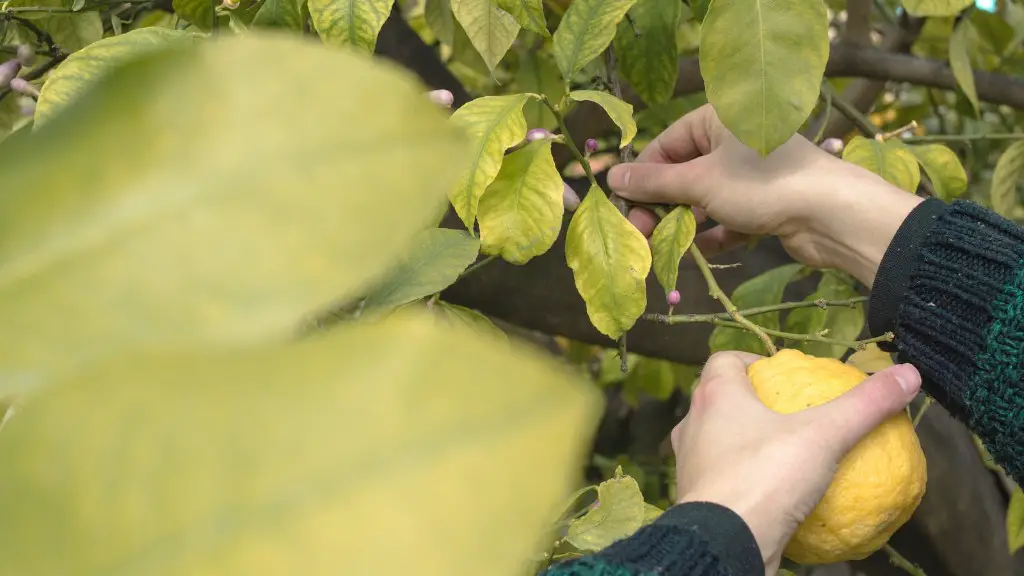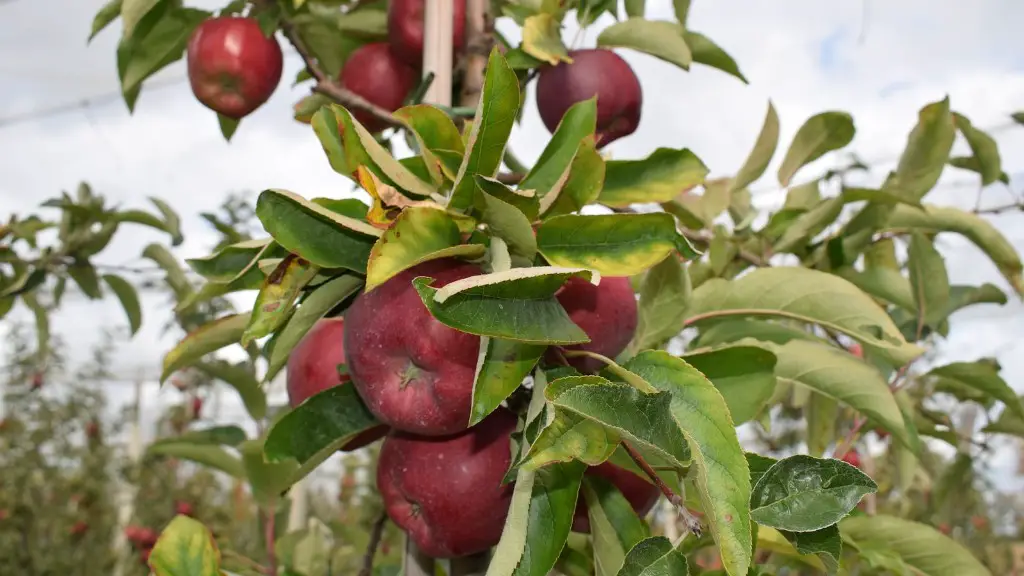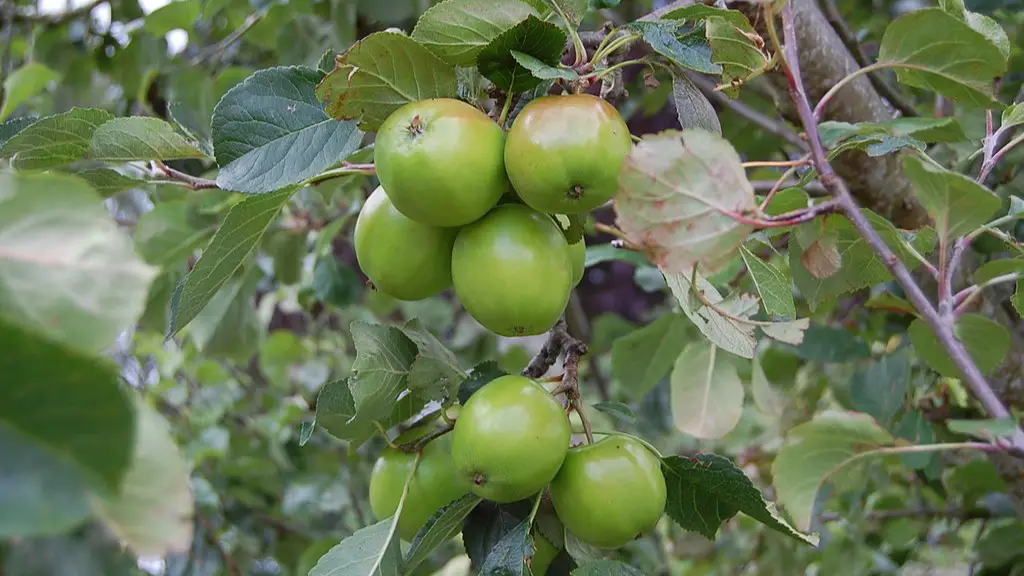Treating lemon tree leaf curl is a common problem many gardeners and citrus tree owners face. The cause of this condition is usually due to environmental factors such as excessive water during the flowering and fruit-bearing stage, and inadequate fertilization. This article will discuss how to properly treat lemon tree leaf curl.
The first step in treating lemon tree leaf curl is to identify the cause. If the leaf curl is due to an environmental factor, such as insufficient watering or fertilization, the stress should be eased entirely and long-term solutions should be implemented to address the underlying problem. If the cause is due to a pathogen, such as a virus or a fungus, then the pest must be controlled in order to reduce further damage.
Once the cause has been identified and necessary steps implemented, there are several tactics that can be employed to reduce the impact of leaf curl on the tree. Pruning is an immediate solution, though it should not be undertaken without first consulting with a certified arborist. Pruning should only be done when necessary, as it can open the tree up to infection and future stressors.
In addition to pruning, applying a pest control treatment is essential to minimizing the impact of leaf curl. A variety of products are available on the market, though they may vary greatly in efficacy. These products should always be applied in consultation with a qualified arborist or horticulturalist.
The last step in treating lemon tree leaf curl is to monitor the condition of the tree to ensure that the treatments are effective. Foliar monitoring should be done at least once a month, to check for signs of continued infestation or stress, as well as measuring impact of the treatments applied. If signs of stress or infestation persist, then more intense treatments may be needed.
Overall, treating lemon tree leaf curl requires a tailored approach based on a careful assessment of the tree’s condition and the cause of the issue. It is important to address the underlying cause as well as work on the symptoms to prevent a future outbreak.
What are the Common Causes of Leaf Curl in Lemon Trees
Leaf curl in lemon trees is often caused by environmental stressors, such as extreme temperatures or insufficient water or fertilizer. Pathogens such as viruses, fungi, and nematodes may also cause leaf curl, especially in susceptible trees or in areas prone to disease. Finally, pest infestations such as aphids, scale, and mealybugs may be responsible for some cases of leaf curl.
Environmental stressors cause leaf curl by interfering with the normal growth of the lemon tree’s foliage. Excessive heat or cold can cause the foliage to curl, while inadequate watering or fertilization can cause the leaves to become dry or yellowed. If these environmental issues are not addressed, leaf curl may become a chronic problem.
Pathogens are especially prevalent in areas with warm and wet climates and enter the tree through its weak spots. These organisms can cause the tree to become malnourished, leading to yellowing and curling of the foliage. Pathogens can spread quickly between individual trees, so prompt diagnosis and treatment are key to avoiding a widespread epidemic.
Pest infestations may also lead to leaf curl if left untreated. Aphids, scale, mealybugs, and other small pests may feed on the tree’s sap, causing yellowing and distortion of the foliage. These pests may be easily treated with insecticide sprays, depending on the severity of the infestation.
What Injuries Can Lead to Leaf Curl in Lemon Trees
Injury to the lemon tree can also cause leaf curl, especially if it is severe or recurring. Physical injury to the bark or branches can disrupt the pathways for water and nutrients, as well as leave a vulnerable entry point for pathogens. Additionally, certain herbicides, fertilizers, and other chemicals may cause leaf curl if used incorrectly or at too high a concentration.
Damage to the foliage of a lemon tree can also lead to leaf curl. Physical damage such as hail, wind, or extreme temperatures may cause leaves to curl or brown. In addition, exposure to certain viruses, fungi, or other pests may cause damage to the foliage, resulting in leaf curl.
Finally, too much sunlight can cause leaf curl in lemon trees. If the tree is exposed to too much direct sunlight, it can cause the leaves to become scalded or sunburned. This can lead to yellowing and curling of the foliage and can eventually lead to the death of the leaves.
In any case of leaf curl, it is important to address the underlying cause as soon as possible. Prompt diagnosis and treatment are the best ways to ensure that the lemon tree recovers and remains healthy.
Preventing Leaf Curl in Lemon Trees
The best way to prevent leaf curl in lemon trees is to create a proactive plan for tree care. Planting stress-tolerant varieties of citrus trees can help, as can providing adequate irrigation and fertilization for the trees. Furthermore, pruning, mulching, and staking can help minimize the risks of injury and protect the tree from harmful pests.
In addition, it is important to monitor the tree’s condition regularly and diagnose any infestations or infections. If any signs of distress or disease are noted, they should be addressed immediately. Pathogens in particular can spread quickly and cause serious harm to the entire tree.
Finally, it is important to act quickly when applying pest control treatments. This will minimize the risk of further damage and contamination by reducing the population of the pests. If necessary, professional assistance should be sought in order to properly and safely apply the treatments.
Other Treatments for Leaf Curl in Lemon Trees
In addition to the above, there are several other treatments that can be used to effectively address leaf curl in lemon trees. One popular and effective treatment is the application of organic or chemical fungicides, which can help prevent and eliminate fungal infestations. Other treatments may involve the use of artificial chemicals such aschlorothalonil or mancozeb, which can help prevent and control fungal infestations.
In some cases, it may be necessary to control the pests and diseases through the use of physical methods. Pruning can be used to remove infected areas of the tree and reduce further risk of infection, as well as to reduce the spread of pathogens through the branches. Furthermore, dormant oils, neem oil, and horticultural oils can be used to control insect infestations, as well as certain fungal and bacterial infections.
Finally, biological control can also be used in conjunction with other treatments for leaf curl. This involves introducing beneficial organisms such as predatory insects, which can help reduce the populations of pests and diseases.
The Pros and Cons of Chemical Treatments for Leaf Curl in Lemon Trees
The use of chemical treatments for leaf curl in lemon trees can be a controversial topic, and it is important to understand the pros and cons of such treatments. One of the main benefits of chemical treatments is that they can quickly eliminate or reduce infestations and diseases, thus reducing the risk of further spread and damage. However, there are also several potential drawbacks to using chemical treatments.
For one, the use of pesticides and other fungicides may be harmful to beneficial insects such as bees, butterflies, and other pollinators. Additionally, the buildup of these chemicals in the soil can potentially create issues for future plantings. Furthermore, the cost of purchasing and applying these treatments can add up quickly, both in terms of money and time.
In addition, chemical treatments can often be ineffective or even counterproductive when used inappropriately. It is important to ensure that the product being used is approved for use on citrus trees and is applied correctly. Incorrect use of chemicals can cause further damage to the foliage, leading to an even larger problem.
Overall, chemical treatments for leaf curl in lemon trees can be a useful tool in controlling the spread of infestations and diseases. However, it is important to understand the potential side effects and risks associated with the use of these treatments.




